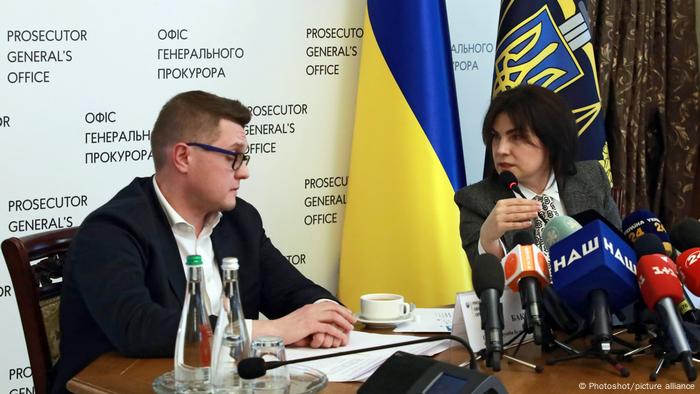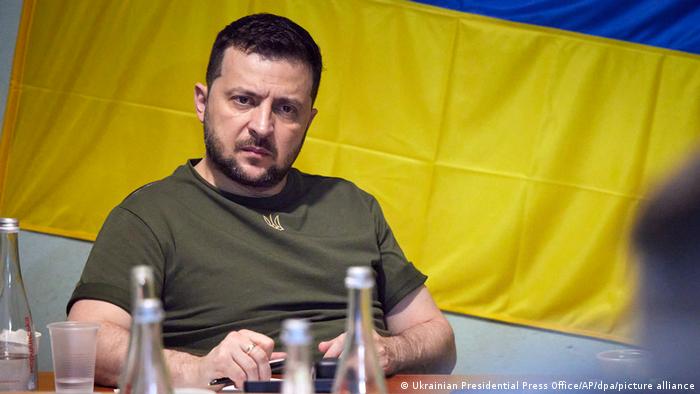Addy Bink, Nexstar Media Wire
Tue, July 19, 2022
(NEXSTAR) – A micrometeoroid caused “significant uncorrectable damage” to NASA’s $10 billion James Webb Telescope, a new report explains. While experts say the impact was small, it has prompted further investigation.
At 21 feet, Webb’s gold-plated, flower-shaped mirror is the biggest and most sensitive ever sent into space. It’s comprised of 18 segments, one of which was smacked by the bigger than anticipated micrometeoroid in May. Micrometeoroids are fragments of asteroids that are usually smaller than a grain of sand, according to NASA.
At the time, Paul Geithner, technical deputy project manager at NASA’s Goddard Space Flight Center explained it was known that Webb would have to survive the harsh environment of space, including micrometeoroids.
In a newly released report, Webb’s commissioning team said that while the mirrors and sunshields on the telescope are “expected to slowly degrade from micrometeoroid impacts,” the impact to one specific segment, known as C3, “exceeded prelaunch expectations of damage for a single micrometeoroid.”
Despite this, Webb’s team has determined the overall impact on the telescope is small. Engineers were able to realign Webb’s segments to adjust for the micrometeoroid’s damage.
Webb has been hit by at least six micrometeoroids since its December launch, equal to roughly one impact per month, matching expectations, according to their report. The damage to C3, however, has engineers investigating whether the impact was rare, meaning it could happen once every few years, or if Webb is “more susceptible to damage by micrometeoroids than pre-launch modeling predicted.”
They are now working to determine how other micrometeoroids could impact Webb’s mirrors, how many of these asteroid fragments there are, and whether the telescope should be adjusted to spend less time pointing toward orbital motion, where it may be at greater risk of being struck by a micrometeoroid.
Depending on its fuel usage, and expected degradation to the telescope, Webb could survive for more than 20 years, according to engineers. It launched into space in December from French Guiana in South America and reached its lookout point 1 million miles from Earth in January. Then the lengthy process began to align the mirrors, get the infrared detectors cold enough to operate and calibrate the science instruments, all protected by a sunshade the size of a tennis court that keeps the telescope cool.
Webb’s first images, which gave us the deepest view into both time and distance that we’ve ever seen, were released last week. With one exception, the latest images showed parts of the universe seen by other telescopes. But Webb’s sheer power, distant location off Earth and use of the infrared light spectrum showed them in new light.
The plan is to use the telescope to peer back so far that scientists will get a glimpse of the early days of the universe about 13.7 billion years ago and zoom in on closer cosmic objects, even our own solar system, with sharper focus.
The Associated Press contributed to this report.

This image released by NASA on Tuesday, July 12, 2022, shows the Southern Ring Nebula for the first time in mid-infrared light. It is a hot, dense white dwarf star, according to NASA. (NASA, ESA, CSA, STScI via AP)

This image provided by NASA on Tuesday, July 12, 2022, shows Stephan’s Quintet, a visual grouping of five galaxies captured by the Webb Telescope’s Near-Infrared Camera (NIRCam) and Mid-Infrared Instrument (MIRI). This mosaic was constructed from almost 1,000 separate image files, according to NASA. (NASA, ESA, CSA, and STScI via AP)More

This image provided by NASA on Monday, July 11, 2022, shows galaxy cluster SMACS 0723, captured by the James Webb Space Telescope. The telescope is designed to peer back so far that scientists can get a glimpse of the dawn of the universe about 13.7 billion years ago and zoom in on closer cosmic objects, even our own solar system, with sharper focus. (NASA/ESA/CSA/STScI via AP)More

This image released by NASA on Tuesday, July 12, 2022, shows the bright star at the center of NGC 3132, the Southern Ring Nebula, for the first time in near-infrared light. (NASA, ESA, CSA, STScI via AP)

FILE – In this April 13, 2017 photo provided by NASA, technicians lift the mirror of the James Webb Space Telescope using a crane at the Goddard Space Flight Center in Greenbelt, Md. The telescope is designed to peer back so far that scientists will get a glimpse of the dawn of the universe about 13.7 billion years ago and zoom in on closer cosmic objects, even our own solar system, with sharper focus. (Laura Betz/NASA via AP, File)More

This image released by NASA on Tuesday, July 12, 2022, combined the capabilities of the James Webb Space Telescope’s two cameras to create a never-before-seen view of a star-forming region in the Carina Nebula. Captured in infrared light by the Near-Infrared Camera (NIRCam) and Mid-Infrared Instrument (MIRI), this combined image reveals previously invisible areas of star birth. (NASA, ESA, CSA, STScI via AP)More

This combo of images released by NASA on Tuesday, July 12, 2022, shows a side-by-side comparison of observations of the Southern Ring Nebula in near-infrared light, at left, and mid-infrared light, at right, from the Webb Telescope. (NASA, ESA, CSA, and STScI via AP)More

FILE – This 2015 artist’s rendering provided by Northrop Grumman via NASA shows the James Webb Space Telescope. The telescope is designed to peer back so far that scientists will get a glimpse of the dawn of the universe about 13.7 billion years ago and zoom in on closer cosmic objects, even our own solar system, with sharper focus. (Northrop Grumman/NASA via AP, File)More

This image provided by NASA on Tuesday, July 12, 2022, shows Stephan’s Quintet, a visual grouping of five galaxies captured by the Webb Telescope’s Mid-Infrared Instrument (MIRI). (NASA, ESA, CSA, and STScI via AP)

Joseph Guzman | July 20, 2022
Story at a glance
A recent YouGov poll found most Americans believe the development of the James Webb Space Telescope is a good investment.
The survey also found widespread support for previous space programs.
The telescope will spend the next several decades gathering information and images on the first galaxies that formed in the early universe.
NASA’s new James Webb Space Telescope developed to peer into the deepest corners of space cost taxpayers some $10 billion and a new poll suggests Americans believe it was money well spent.
A recent YouGov poll of 1,000 U.S. adults found 35 percent of respondents said the James Webb Space Telescope — which was launched late last year and recently delivered the deepest and sharpest infrared image of the distant universe — is a very good investment and 25 percent believed it was a somewhat good investment. Just 13 percent said it was either a somewhat bad or very bad investment while 26 percent were unsure.
The poll was conducted July 14-18 following the release of the first images, which included galaxies billions of lightyears away that formed after the Big Bang.
America is changing faster than ever! Add Changing America to your Facebook or Twitter feed to stay on top of the news.
The survey also found widespread support for previous space programs. The majority of respondents said the Hubble space telescope, sending astronauts to the moon and sending probes to other planets are worthwhile investments. When it comes to support for NASA overall, 31 percent of Americans said they had a “very favorable” opinion of the space agency and 39 percent said they had a “somewhat favorable” opinion, compared to 14 percent who said they viewed the agency unfavorably.
When it comes to NASA’s budget, 27 percent said it should be increased, 32 percent said it should stay about the same while 14 percent want it reduced and 5 percent said it should be cut entirely.
The James Webb Space Telescope, which is a joint effort by NASA, the European Space Agency and the Canadian Space Agency, is among some of the most costly scientific endeavors in history and has been in development over more than two decades. NASA’s largest and most powerful space telescope was initially supposed to cost much less but a combination of engineering and mismanagement led to delays and higher costs.
The telescope will spend the next few decades gathering information and images on the first galaxies that formed in the early universe.
George Back
·Producer, Yahoo Entertainment
Wed, July 20, 2022
Fresh off last week’s release of awe-inspiring photos from the James Webb Space Telescope, Program Director Gregory Robinson visited The Daily Show With Trevor Noah on Tuesday. Robinson took over the $10 billion project in 2018 and “got it across the goal line,” as he put it. While the feat would be impressive for anyone, it was especially so for Robinson.
His parents were tobacco sharecroppers in rural Virginia, where he attended a segregated school. While that may seem like a disadvantage, Robinson actually credits that education for his later success.
Noah asked, “Where does that light come from and how did you get into this role?”
“That education in the segregated school was excellent,” Robinson explained. “We had some of the best teachers in the world. Many of them were far more educated than the teachers in other schools because they couldn't get jobs in the industry like they can today.”
While Robinson modestly gave his colleagues at NASA credit for the program’s success, he gave his teachers credit for nurturing his young intellect.
“We had great teachers who really nurtured us and cared about us,” he said. “So my beginnings were very strong.”













